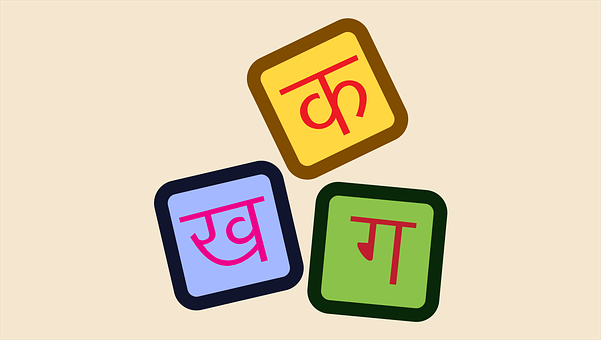It is a common experience for Indians who travel abroad that, at one point or another, they will have to convince someone that India has more than one language and that, among the many, there is no such language called ‘Indian’. The idea that India is a plurality of tongues that are not only unintelligible to each other, but also survive on their own independent alphabet system and body of literature, can be an overwhelming concept to make sense of for many outside of the country.
But it’s true. In addition to the 22 scheduled languages (Hindi, Bengali, Marathi, Punjabi etc.) that are afforded special status by the constitution, researchers estimate the actual number of languages in the country to be at least 780, with around 250 having died in the past century. The biggest threat to local languages appear to be the more dominant ones spoken in India like English and Hindi. In the tech world, English is almost exclusively used and the idea of content, mobile devices or even conversations between colleagues in tech-spaces being in local languages is unheard of.
Which is a shame, according to CEO Meghashyam Karanam of Megdap, who decided to do something about it along with his co-founder Pradeep Parappil. Megdap is based on the platform Texlang which can translate digitised content for a business (like a KYC document for example) from regional languages in India into English. The tech world may be biased towards English but the business world operates among the more than billion people around India who don’t speak it.
‘You’re opening up the floodgates for people who don’t speak English.’ Karanam said of the access that this technology now gives to an entire population of Indians restricted by their inability to speak English. A large bank in India that used Texlang found that it could increase its customer base on mobile apps as a result of having it in the local language. ‘Most of the translation apps nowadays do have a certain level of accuracy but they’re still not business ready,’ he added.
‘Microsoft was one of the first companies to look at languages and when mobile came in the language localisation became sort of no-brainer.’ Karanam said of his time at Microsoft India where initially scepticism reigned when debating the use of converting Microsoft products like Windows and Skype for Indian languages. ‘Do we really need this? was the view.’ Karanam said of the challenges they first faced but notes that now people don’t ask him about the value of localisation of languages or its practical use any more. There then came a point in the company where it was realised, according to Karanam that ‘You know what, we’re missing everyone else in the digital revolution. Creating a digital divide if you will. No one questions it with print – but with digital there was this prejudice towards local languages.’
At the moment Megdap, which was accepted into the most recent batch of Microsoft Accelerator Bengaluru, functions for 14 Indian languages (as well as international ones like Mandarin, Japanese and Hebrew) with the hope of also including an analysis function that summarises large amounts of content into smaller meaningful bites. If the aim is to cover “business” then you’re doing pretty well.’ Karanam said of these 14 languages, adding that ‘if the aim is to make social impact you have to think beyond these languages.’
 It’s Kahaniya’s hope to look beyond business and make a social impact for India’s regional languages. The platform allows writers in local languages (and English) to profit from their works by allowing exposure to their works written in their mother tongue. Based in Hyderabad, CEO Pallav Bajjuri currently has a stock of Telegu writers on the platform like Malladi Venkata and Athreyasa Desharaj. Currently operating on 4 languages (Hindi, Tamil, Bengali and Malayalam), they are looking to expand this to include writers of 11 Indian languages as well as Urdu, which happens to be Bajjuri’s favourite.
It’s Kahaniya’s hope to look beyond business and make a social impact for India’s regional languages. The platform allows writers in local languages (and English) to profit from their works by allowing exposure to their works written in their mother tongue. Based in Hyderabad, CEO Pallav Bajjuri currently has a stock of Telegu writers on the platform like Malladi Venkata and Athreyasa Desharaj. Currently operating on 4 languages (Hindi, Tamil, Bengali and Malayalam), they are looking to expand this to include writers of 11 Indian languages as well as Urdu, which happens to be Bajjuri’s favourite.
‘When you think about content in English, it’s a vast ecosystem.’ told us, ‘However, when you look at content available in the Indian languages on the internet, it is restricted to entertainment and current affairs and, that too, it’s primarily video and audio with no text involved.’ he added of his motivation for creating a broader content base for which readers in other languages could consume regional writers. ‘Successful books like The World is Flat or books by Dale Carnegie –it’s pitiful that that kind of content isn’t available to people that don’t speak English.’ Bajjuri lamented.
Similarly, Kahaniya also faced challenges at the funding stage, with many questioning the possibilities that could come out of it. To date, it’s largest supporters have been NRIs (like Shashi Tharoor who launched it) who are passionate about languages. ‘The biggest tragedy that we have in India is that there are very few investors who look at social and economic value opportunities together.’ In addition to this, despite a nationalist push in favour of Indian languages, there has also been very little government support except for permission to digitise a few anthologies. ‘They should encourage writing and storytelling in local languages.’ Bajjuri noted. ‘Fortunately for me, the market has been speaking about it. If no one really cared about regional languages, then Amazon would not invest in regional movies. The fact that so many companies have invested in it speaks for itself.’
This sentiment is reflected in the fact that publications like Yourstory now has editorial boards and regularly publishes original content in regional languages. This also reflects some of the experience that Karanam had with Megdap in his Microsoft days, where the investment became clear as more and more people were being left out and initial problems, like issues of font for example, become worth spending time on.
In a country of multitudes, compromises will have to be reached on everything, be it the languages that are given more priority of focus or the establishment of dictionaries of minority or indigenous languages. Karanam has found this compromise in his own family. Having a number of languages spoken at his home (his environment being a mix of Kannada, Telegu, Tamil as well as English and Hindi), he stands by the unifying rule that:
‘The TV speaks the language of your wife, right?’












